Early humans used bows and arrows to hunt in tropical rainforests 48,000 years ago, study says-By Ashley Strickland

Source:Edition
(CNN)Early humans living on the island of Sri Lanka 48,000 years ago crafted tools from animal bones and used them to hunt monkeys and squirrels, according to a new study. This represents the earliest evidence of bow and arrow technology outside of Africa to date.
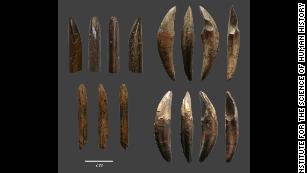
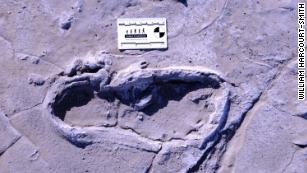
Unique beads
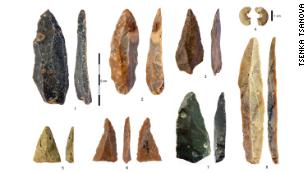
Spotlight on Sri Lanka
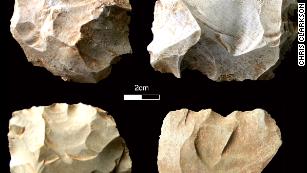
Bows and arrows and complex symbolic displays 48,000 years ago in the South Asian tropics
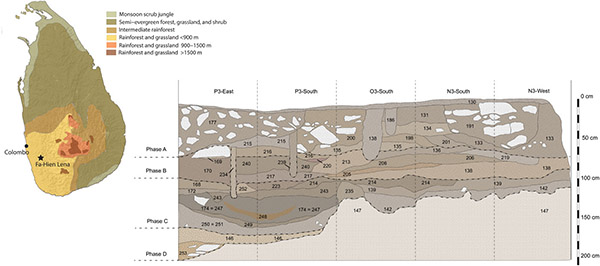
Source:Advances.sciencemag
Abstract
Archaeologists contend that it was our aptitude for symbolic, technological, and social behaviors that was central to Homo sapiens rapidly expanding across the majority of Earth’s continents during the Late Pleistocene. This expansion included movement into extreme environments and appears to have resulted in the displacement of numerous archaic human populations across the Old World. Tropical rainforests are thought to have been particularly challenging and, until recently, impenetrable by early H. sapiens. Here, we describe evidence for bow-and-arrow hunting toolkits alongside a complex symbolic repertoire from 48,000 years before present at the Sri Lankan site of Fa-Hien Lena—the earliest bow-and-arrow technology outside of Africa. As one of the oldest H. sapiens rainforest sites outside of Africa, this exceptional assemblage provides the first detailed insights into how our species met the extreme adaptive challenges that were encountered in Asia during global expansion.
INTRODUCTION
South Asia, and Sri Lanka more specifically, has emerged as a particularly important region for understanding how our species managed to successfully colonize a wide variety of environments among a backdrop of changing climates and interhominin contacts (1–4). As early as the 1980s, it was proposed that microlith technologies alongside bone technologies and ochre use appeared in Sri Lanka earlier than they did in Europe (5). Despite these suggestions, and the recognized importance of the region for human evolutionary studies, detailed studies of the material culture recovered from its most ancient sites have thus far been lacking, particularly with regard to postulated personal ornaments (6–7), potential projectile technologies (4, 8), and other forms of material culture that provide insight into how human societies negotiated the South Asian tropics during the Late Pleistocene. It is only recently that multidisciplinary excavation of long, well-dated cave and rockshelter sequences is enabling these questions to be investigated and the findings to be compared to records from more customarily discussed regions (9).
As the site of the earliest fossil appearance of Homo sapiens in South Asia (5), Fa-Hien Lena cave in southwestern Sri Lanka is a crucial locale for understanding the adaptive capacities and cultural flexibility that humans required as they first moved throughout the diverse environments of Asia. Ongoing analysis of the site has already found that it holds the earliest microlith assemblage in the region (9) and attests to targeted hunting of prime-aged semi-arboreal and arboreal monkeys and squirrels (4). Here, we present evidence for the earliest use of bow-and-arrow technology outside of Africa—a unique tradition using innovative osseous-based arrow heads. Also described is a diverse toolkit of bone and tooth tools indicating the manufacture of plant- and/or hide-based items that may represent some of the earliest clothing or nets in a tropical setting, alongside a complex array of symbolic artifacts—this record stretching from c. 48 ka (thousand years) through to c. 4 ka BP (before present) (Fig. 1).
Location and stratigraphy of Fa-Hien Lena, Sri Lanka.
RESULTS
On the basis of stratigraphy and dating, four distinct phases of occupation have been identified at Fa-Hien Lena (Fig. 1). Phase D contains evidence for Late Pleistocene occupation of the cave from c. 48 ka to 34 ka cal. BP and probably involved several episodes of occupation, each of which may have been relatively short-lived. Phase C spans the Terminal Pleistocene occupation from c. 13 ka to 12 ka cal. BP, while phases B and A span the Early (8.7 ka to 8 ka cal. BP) and Middle (6 ka to 4 ka cal. BP) Holocene, respectively. One radiocarbon date falls outside these phases (29,120 to 27,870 cal. BP) and may represent a short-lived episode of human presence within the cave (4).
Osseous hunting technologies
Analysis of the recovered faunal remains determined that the osseous tools to be described below were made on site. Blanks, unfinished tools, and waste pieces were identified in each of the four phases, with broken fragments of finished artifacts, along with several points displaying cut marks consistent with those produced during retooling activities, suggesting that maintenance of weapons was also regularly practiced. Of the artifacts made on terrestrial bone, 130 are consistent in size, morphology, weight, and use wear with having served as projectile points. Flaked and ground into shape, three broad categories of point were identified: unipoints (n = 24; 18.4%), bipoints (n = 18; 13.8%), and geometrics (n = 2; 1.5%), with the majority of the collection made up by fragments exhibiting both manufacturing traces and impact fractures, though not complete enough to determine the original form (n = 86; 66.1%). Unipoints exhibit notches on their left and/or right sides around their midline indicating fixed hafting using ligatures (Fig. 2, D and E). Similar notching attributable to hafting measures was also observed on a number of the bipoints (Fig. 2, C and F) while others, such as the geometrics, show no signs of having been fixed to a shaft (Fig. 2, A and B). Decoration or grooves for holding poison (10, 11) were only found on a single point (Fig. 2C). All points are made on Cercopithecid long bone.
Bone projectile points (A to H) and scrapers (I to K) from Fa-Hien Lena. (A and B) Geometric bipoints, with (B) coming from phase D context 146; (C and F) hilted bipoint, red arrows indicate cut notches; (D and E) hilted unipoints, red arrows and red circle indicate wear indicating fixed hafting; (G and H) symmetrical bipoints.
The hafting and launch mode for the bone points are determined through the combined consideration of the form of the point (size, weight, and proximal morphology), use wear (hafting and impact), and comparison to ethnographic observations of arboreal mammal hunting. Before the introduction of the shotgun, bows and arrows and blowguns were the weapons of choice for hunting monkeys in South America, Asia, and Africa (12–16). Both these technologies require small, light points with the only difference being that arrow tips were fixed (hafted) to a lightweight shaft, while blow-gunning requires a long and exceptionally light dart to be fletched with an equally lightweight stuffing to create a seal within the blowgun. These technologies are made from plant and/or osseous materials—the choice of species being dependent on what is available in the environment. Lacing the points with poison is also a common feature (14–19). Of note here, the use of bones from hunted monkeys to produce projectile points has been recorded in recent times (20).
We can rule out the use of the Fa-Hien Lena unipoints and the larger bipoints as blowgun darts as they are morphologically unsuitable for this launch mode—being too short, too heavy, and having being hafted. Instead, they display design and use wear for fixed hafting (notches, shoulders, and wear to proximal edge) to a thin—less than 1 cm thick—shaft as inferred by proximal width of the points (median, 3.5 mm). Furthermore, the dominance of distal-mesial fragments within the recovered assemblage is consistent with osseous projectile point collections (21). They also commonly display step-terminating bending fractures and spin-offs to their distal extremity, damage considered to be diagnostic impact fractures for brittle solids (22, 23). While differentiating between arrow and spear points on use wear alone is currently untenable, the size of the Fa-Hien Lena points is too small for a single-pointed spear, and, while consistent with those that would tip a multipronged spear, this weapon would be ineffective for the environment and prey present in this context as closed forest environments do not allow for the lengthy arced trajectory that these weapons typically require.
Thus, the small size, light weight, fixed hafting, presence of hunting-consistent impact fractures on distal extremities, assemblage composition, and ethnographic analogies combine to indicate that the bow and arrow was in use at Fa-Hien Lena from at least 48 to 34 ka cal. BP (Fig. 2 and figs. S3 and S4). The use of the bow and arrow is further supported by the fact that the zooarchaeological prey mortality profiles based on dental eruption and wear suggest that prime-aged adult monkeys were targeted (4)—this projectile technology allowed for the deliberate targeting of specific individuals. In contrast, the use of traps in the capture of semi-arboreal taxa usually results in mortality profiles similar to those in natural populations (24, 25).
The geometrics, on the other hand, do not display clear evidence for fixed hafting and may represent fishing gorges similar to those found in Later Stone Age African (26) and Late Holocene East Coast Australian contexts. Fish remains were found in all phases of Fa-Hien Lena, with two families—silurids (catfish) and cyprinids (carp)—identified (4). Ethnoichtyological studies from Sri Lanka show that these fish are caught using a variety of techniques, including the use of ichthyotoxic plants, spearing, line fishing, and the use of cane baskets and nets (27, 28). Alternatively, these small, carefully shaped points could have functioned as barbs within snares or netted traps—the use of such technology noted for catching both arboreal and ground-dwelling prey (29, 30). As outlined below, evidence for the processing of skins and plant fibers is abundant at this site, so the use of snares or nets is supported by additional lines of evidence.
Analysis of the metric data suggests that the bone projectile points increase gradually in absolute length between phase D and phase A at Fa-Hien Lena. This expansion in artifact size correlates with an increase in the exploitation of larger mammals, particularly Suidae, Cervidae, and Bovidae (4), demonstrating fluidity in the developed hunting technology. This toolset mirrors the quartz microlith assemblage—which may also have tipped arrows—recovered from the site, which also showed very little change in dimension and raw material during the c. 40 ka that Fa-Hien Lena was occupied (9).
Four artifacts constituting a different bone-based technology were recovered from phase C, dating to 13 to 12 ka cal. BP (Fig. 2, I to K). These pieces have been flaked into shape and resemble cutting or scraping tools made in stone. Yet another approach to osseous technology found in phase C contexts at Fa-Hien Lena is a single deer antler blank made using the groove-and-splinter technique (Fig. 3C) and another in the younger phase B. No other antler-based technology has yet been found.
(A and B) Cercopithecid bone peg or lissoir; (C) antler blank; (D and F) Cercopithecid canine awls or knives; (E) flaked muntjak molar; (G and H) Cercopithecid bone pegs or awls; (I) cervid metapodial wedge.
Plant- and/or skin-working technologies
An additional 29 bone implements display morphologies and wear consistent with use as awls, pegs, wedges, and lissoir—tools associated with the working of skins and/or plant fibers (Fig. 3). Traditionally, discussion of the origin and development of clothing has been tied to the need to protect the body from the cold (31). However, the Sri Lankan evidence suggests that clothing development may represent another technology that could be molded to suit the circumstances—in this case, perhaps as a layer of protection from insect-borne disease.
The three modified (flaked) Cercopithecid canines fit comfortably into this skin/plant working techno-complex, as does a single barking deer (Muntiacus muntjak) molar that has been flaked to accentuate the sharp tip (Fig. 3F). A final find that supports the working of animal skins and/or plant fibers at Fa-Hien Lena is a carefully shaped bone ellipse from phase A (Fig. 4A). Each side is marked with regularly spaced lithic-cut notches—19 on the left and 10 on the right (Fig. 4B). Several very shallow cut marks are also visible down each edge. The tip has accrued extensive rounding and polish with a large chip taken out of one face, while the base has been snapped in antiquity. The size, shape, and use wear of the piece could suggest use as a shuttle or mesh stick/gauge for constructing nets (32). The even spacing of the notches down each side of the piece could coincide with the spacing of knots and loops (33) and, as nets are exceptionally useful in catching both arboreal and aquatic resources, would be perfectly suited to the Sri Lankan environment. Alternatively, it may represent a decorated “spatula,” though it would be too thin for practical use (34).
(A and B) Possible decorated spatula, shuttle, or lissoir in bone; marine shell beads in (C to E) Conus spp. and (F and G) Nassariidae; ochre beads (H to K and O) and used (L) yellow, (M) red, and (N) mica colorants.
Symbolic and social technologies
Evidence for symbolic and/or social behaviors include three marine shell beads: two made from the apex of Conus spp. (phases D and B; Fig. 4, C to E) and one from a mud snail (Nassariidae) (phase C; Fig. 4G). Each displays a single perforation and extensive wear (rounding, polishing, and key-holing) from use (Fig. 4, D and F). This rounding and polish is so extensive that all signs of flaking and/or grinding from the reduction of the shell into a disc form are completely absent. The preference for white, bright, shiny, and round qualities in the shells selected for beads is therefore similar at this Sri Lankan site to what is observed at other H. sapiens sites of similar age (35, 36). No economic marine shell or any marine fish bones—with the exception of several shark teeth—were found at the site, indicating that either the people who used Fa-Hien Lena visited the coast to collect these materials or had contact with groups living on the coast. Given that stable carbon and oxygen isotope information from human tooth enamel at the nearby site of Batadomba-Lena implies year-round tropical forest foraging, trading between groups focusing on different ecologies seems more probable (2, 3).
Completely unique to the site are three large beads made entirely of red ochre nodules, one found in phase B (8.7 to 8 ka cal. BP) and two with missing provenance (from excavations before 2010, Fig. 4, H, J, and O). Unlike the 136 other fragments of yellow, red, and mica colorants that exhibit striations from grinding and scraping to produce powdered pigment—only one of the beads shows any sign of grinding or scraping of its surface (Fig. 4J). Instead, all three have been perforated with c. 3-mm holes, the edges of which show signs of stringing (Fig. 4I). The higher surfaces of each ochre bead exhibit extensive rounding and polish, indicating that they have rubbed against a soft surface such as skin or hide. As far as we are aware, no other ochre beads have been reported for any other Pleistocene or Early Holocene–aged contexts anywhere in the world—instead, more durable beads (such as those made in shell or bone) have been found colored with pigment, either incidentally (transfer from the body/clothing) or deliberately (35). At Fa-Hien Lena, no traces of colorants were observed on the shell beads, possibly owing to the fact that they were recovered during wet sieving and later washed.
Silver (mica) pigments are the dominant colorant in the assemblage, followed by dark-to-bright reds, and then bright yellow. Mica nodules are exceptionally small in most cases, averaging just over 1 cm in maximum dimension. The 31.5-g specimen shown in Fig. 4N was the largest colorant piece recovered and displays significant grinding and rubbing facets. If mica was available in large nodules, as this example indicates, the small finds then suggest that this type of pigment was regularly reduced to near exhaustion.
DISCUSSION
The proliferation of parietal and portable art along with the dynamic change in technological complexity during the European Upper Paleolithic (c. 45 to 11 ka BP) has been held up as a “gold standard” in human cultural development (37–40). In Western and Central Europe, tailored clothing, osseous technologies, and figurative art have been argued to enable resilience in the face of cold climates and growing populations (41). More recently, finds in Africa placed the earliest evidence for symbolism and extensive social signaling alongside sophisticated production of blades for projectile technologies in the coastal contexts of southern and northern Africa c. 100 to 80 ka (42–44). Long traditions of archaeological excavation and prioritization in these regions have meant that they eclipse other parts of Africa, Asia, Australasia, and the Americas in quantity of archaeological residues reported and, consequently, discussions of the origins and adaptive context of material culture characteristic of our species. This trend has prevailed despite the fact we now know that by the end of the Late Pleistocene, H. sapiens populations were occupying arid environments in Southern Africa and Australia (45, 46), paleoarctic settings in Siberia (47), high-altitude environments on the Tibetan Plateau (48), and, most significantly here, tropical forests in Africa (49), Southeast Asia (50), Melanesia (51), and Sri Lanka.
By providing the first in-depth traceological insights into the use of organic technologies in the Wet Zone of Pleistocene Sri Lanka, we have identified different types of pointed bone technologies in the record of Fa-Hien Lena—including notched unipoints and bipoints that likely tipped arrows, as well as geometric points that were potentially used in freshwater fishing. While the use of fiber at the site may also have supported the application of trapping in hunting arboreal and freshwater resources, it is now definitively evident that the majority of the osseous technologies were used in the high-velocity projectile hunting of small semi-arboreal and arboreal game. This finding is notable in a global context as it represents the earliest definitive evidence for high-powered projectile hunting in a tropical rainforest environment at 48 ka BP—and the earliest evidence for bow-and-arrow technology outside of Africa (52). While the use of high-velocity projectile weaponry has been tentatively suggested at 32 ka BP at Lobang Hangus (Niah Caves, Sarawak), more definitive evidence in Southeast Asia is limited to the Terminal Pleistocene and Holocene but concentrated around the Pleistocene-Holocene boundary (53, 54).
The Fa-Hien Lena osseous technologies share a number of commonalities with that recovered from the similarly aged Niah Caves contexts some 3000 km away in Sarawak, for which a tropical rainforest environment has also been reconstructed during the Late Pleistocene (55, 56). In particular, the use of fine grinding to shape the artifacts and the use of pointed long bones leaving the diaphysis intact are recorded at both sites, as is the dominance of projectile points over other osseous tool forms in the assemblages. Teeth were used as tools at both locations (suids at Niah and Cercopithecid and Muntiacus at Fa-Hien Lena). Differences are also apparent, however, the most important being that while the tools at Fa-Hien Lena were almost exclusively made on Cercopithecid bone (with the exceptions of the few made on large mammal bone from the Terminal Pleistocene), at Niah, the tools were manufactured mostly from large or intermediate-sized mammals (55, 56).
We also present the first high-resolution analysis of symbolic material culture from a Late Pleistocene site in tropical Sri Lanka. Microscopic analysis has demonstrated that H. sapiens populations in this part of the world—as those recorded in Africa and Eurasia at this same period—continued to value mineral colorants and marine shell beads for social signaling practices. Unique to this site, however, is the heavy usage of silver (mica) pigments alongside both bright red and bright yellow. While the collection and use of silver pigments are noted for other early H. sapiens sites in Asia and Australasia, such as Madjedbebe (57), as far as we are aware, we report the first instance of beads made from ochre nodules. The use of both ochre and marine shells for ornamentation purposes is demonstrated for H. sapiens in the Middle and Later Stone Ages of Africa from c. 100 ka BP (58), from c. 45 ka BP in Eurasia (36), and from 45 ka BP in Island Southeast Asia (59). It is noteworthy that, yet again, we find light-colored shells and colorants in bright hues forming the backbone of the symbolling system. Given the stable isotope evidence that highlights the reliance of humans living at the Late Pleistocene Wet Zone rainforest sites on forest resources (2, 3), the attainment of marine shells, which were then elaborated, also highlights the significance of exchange networks between populations on different parts of the island. Alongside later, Terminal Pleistocene evidence for shark teeth and marine shell beads at Fa-Hien Lena (6) and Balangoda Kuragala (2), this initial finding implies the development of long-distance trading networks between populations exploiting the interior rainforests and groups located on the coast.
It is becoming increasingly apparent that if we are to understand the technology, symbolic material culture developments, social contexts, and adaptive strategies that accompanied our species during its expansion within and beyond Africa, it is important to study records beyond the traditional heartlands of paleoanthropological and Paleolithic archaeological research (59–63). Notably, we have demonstrated that elements such as clothing and fiber traps, projectile technologies, and symbolic networks, once thought to be characteristically early in Europe and Africa (39, 40), were present among early human populations at the tip of South Asia inhabiting a tropical rainforest environment. Recent research has highlighted the nonlinear and divergent way in which traits of supposed “behavioral modernity” among our species appeared (63–65). Yet, if we are to move away from essentialist ideas of “modernity,” toward understandings of “variability” (63), it is also essential to determine the diverse environmental contexts in which personal ornamentation, projectile technologies, and long-distance social networks emerged in the Pleistocene, not just in Africa but also beyond. Only then can we fully understand the adaptive contexts behind these behaviors and the nature of their application in the unique diversity of environments that our species was to colonize by the start of the Holocene.
MATERIALS AND METHODS
The bone tools and artifacts analyzed in this study were selected from the faunal assemblages recovered during the 2009 to 2012 excavations of Fa-Hien Lena. In addition to looking at finished osseous artifacts, we also looked at anthropic modifications on faunal remains (e.g., cutmarks, grinding, and deliberate breakage), and the results were presented in detail by Wedage et al. (4). All artifacts were examined using a Zeiss Stemi 508 stereomicroscope fitted with an AxioCam 105 camera. Metrics were obtained using Mitutoyo CD-6″ CX digital calipers, whose metal arms were coated with a thin plastic layer to protect the artifacts from scratches. Identification of manufacture and use traces was based on previous examinations of osseous, marine shell, and colorant assemblages. To date, a total of 30 radiocarbon dates are available for Fa-Hien Lena (4, 6), allowing for a detailed phasing for the site. We also revised the site’s stratigraphy. Details of the site chronology and phasing are presented in the Supplementary Materials.
SUPPLEMENTARY MATERIALS
Supplementary material for this article is available at http://advances.sciencemag.org/cgi/content/full/6/24/eaba3831/DC1
This is an open-access article distributed under the terms of the Creative Commons Attribution-NonCommercial license, which permits use, distribution, and reproduction in any medium, so long as the resultant use is not for commercial advantage and provided the original work is properly cited.












